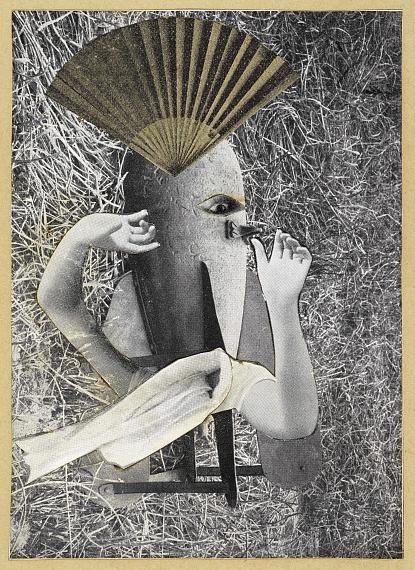
The Chinese Nightingale / Le rossignol chinois, 1920
Collage and ink on paper
15,5 x 9 cm
Musée de Grenoble
© VG Bild-Kunst, Bonn 2024
FOTOGAGA. Max Ernst and Photography
A Visit from the Würth Collection
Manuel Álvarez Bravo » Eugène Atget » Hans Bellmer » Aenne Biermann » Karl Blossfeldt » Bill Brandt » Brassaï » Josef Breitenbach » Josef Breitenbach » Claude Cahun » Denise Colomb » Alfred Ehrhardt » Max Ernst » Heinz Hajek-Halke » Georges Hugnet » Yousuf Karsh » Milos Korecek » Hermann Landshoff » Lord Snowdon » Sara-Lena Maierhofer » Man Ray » Ann Mandelbaum » Emila Medková » Lee Miller » László Moholy-Nagy » Arnold Newman » Jean Painlevé » Irving Penn » George Platt-Lynes » Ronit Porat » Ernst Redenz » Albert Renger-Patzsch » Franz Roh » Christian Schad » Gotthard Schuh » Frederick Sommer » Maurice Tabard » Karel Teige » Raoul Ubac » Reinhart Wolf » & others
Exhibition: 18 Oct 2024 – 27 Apr 2025
Tue 14 Jan
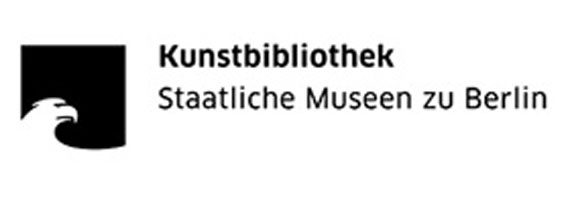
Museum für Fotografie
Jebensstr. 2
10623 Berlin
+49 (0)30-266424242
mf@smb.spk-berlin.de
www.smb.museum/mf
Tue-Sun 11-19, Thu 11-20
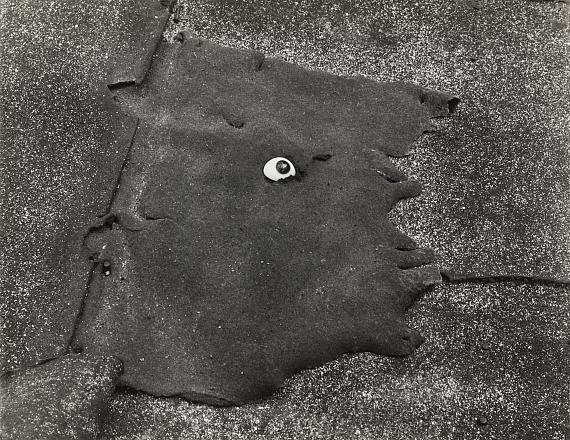
Black / Černoch, 1949
Silver gelatin paper
Sammlung Dietmar Siegert
© Eva Kosakova Medkova
Photo: Christian Schmieder
FOTOGAGA. Max Ernst and Photography
A Visit from the Würth Collection
Exhibition: 18 October 2024 – 27 April 2025
Opening: Thursday, 17 October, 7pm
Max Ernst holds a prominent position within Dada and Surrealist Art. His name stands for genre-bending works that combine dream and reality. The exhibition "FOTOGAGA: Max Ernst and Photography. A Visit from the Würth Collection" is the first to search for points of intersection between his work and photography. Commemorating Surrealism’s centenary, the Museum für Fotografie (Museum of Photography) is showing a representative overview of Max Ernst’s artworks from the Würth Collection. These are complemented by works from the Kunstbibliothek, Kupferstichkabinett, Sammlung Scharf-Gerstenberg and the Staatsbibliothek zu Berlin, and other exceptional loans from museums and private collections in France and Germany.
The art of Max Ernst (1891–1976) was created at a time characterised by a new, creative approach to photography. Snapshots, scientific photographs and images of war machinery inspired him and served as working materials, especially for his collages. Technical and artistic developments in the medium of photography significantly influenced his work. He used photographic reproduction techniques to increase the visual impact of his works: enlargements allowed his small-format collages to hold their own alongside paintings in exhibitions; the production of photo postcards of the collages ensured that the works could be distributed quickly and easily; and the inversion of the tonal values in a photogram enhanced the effect of his frottages.
Max Ernst himself never used a camera for his art, but he liked to pose for the camera, whether for images taken by well-known photographers or made in photo booths. At times serious, at times a little "gaga", the portraits illustrate not just the artist’s love for playfulness but also an occasionally strategic use of photography to promote his artistic agenda. The title of the exhibition ‒ "FOTOGAGA" ‒ is derived from a group of works by Hans Arp and Max Ernst, which they called "FATAGAGA": the "FAbrication de TAbleaux GAsométriques Garantis (Fabrication of Guaranteed Gasometric Images)". One of these photocollages, in which the two artists address their relationship as friends, can be seen in the exhibition.
Some 270 works will be exhibited, primarily works on paper but also paintings by Max Ernst and photographs, photograms, collages, and illustrated books by his Surrealist contemporaries. Although these artists were explicitly not dealing with mundane reality but instead with what lies beneath, behind and in-between, the still relatively new medium of photography was of great importance for many. Last but not least, they also used it to make visible what remains hidden to the naked eye without technical means: the distant, the tiny, the moving.
Max Ernst’s works are framed within the context of both contemporary and historical references. There are numerous and surprising parallels to photographs by other artists. An avid delight in experimentation and a creative game played with chance characterise the works selected for the exhibition. Their originators reflected on forgotten photographic processes from the 19th century and developed new techniques using light-sensitive materials. Semi-automatic methods, working with found objects, unusual combinations, and the blurring of traces have equally shaped the work of Max Ernst and the photographic oeuvres of many of his contemporaries and other artists that followed. Even a century after André Breton published the first Surrealist Manifesto on 15 October 1924, they have not lost any of their fascination.
The Staatliche Museen zu Berlin look back on a longstanding cooperation with the Würth Collection. FOTOGAGA: Max Ernst and Photography is the fourth exhibition in a series that began in 2019‒20 with Anthony Caro: The Last Judgement Sculpture from the Würth Collection at the Gemäldegalerie. It was followed in 2021‒22 by Illustrious Guests: Treasures from the Kunstkammer Würth in the Kunstgewerbemuseum and David Hockney – Landscapes in Dialogue. "The Four Seasons" from the Würth Collection in 2022, also shown at the Gemäldegalerie. The exhibition at the Museum für Fotografie draws on the Würth Collection’s extensive holdings, especially of Max Ernst’s graphic works, which are now being shown in Berlin for the first time.
An extensive programme of tours and workshops invites visitors to discover the exhibition through discussion and exchange, as well as to try out Surrealist techniques themselves. A series of lectures beginning in February 2025 examines individual issues raised in the exhibition from different perspectives.
A richly illustrated catalogue in German and English is being published (Wienand Verlag) with essays by Katja Böhlau, Ludger Derenthal, Michael Lailach and Jürgen Pech.
The exhibition is curated by Katja Böhlau and Ludger Derenthal, Kunstbibliothek – Staatliche Museen zu Berlin.
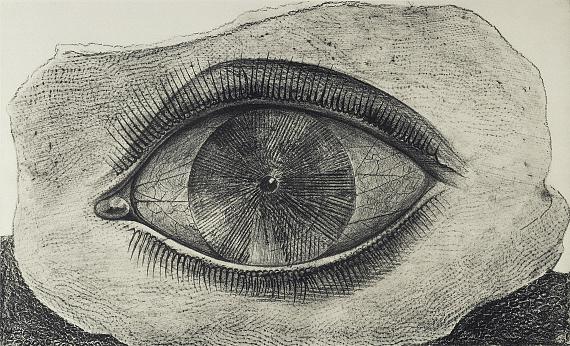
The Wheel of Light / la roue de la lumière
in: Histoire Naturelle, 1926
Collotype of a frottage
Sammlung Würth
© VG Bild-Kunst, Bonn 2024
FOTOGAGA. Max Ernst und die Fotografie
Die Sammlung Würth zu Gast
Ausstellung: 18. Oktober 2024 bis 27. April 2025
Eröffnung: Donnerstag, 17. Oktober, 19 Uhr
In der Kunst des Dadaismus und Surrealismus nimmt Max Ernst eine herausragende Stellung ein. Sein Name steht für grenzüberschreitende Arbeiten, die Traum und Wirklichkeit verbinden. Die Ausstellung "FOTOGAGA. Max Ernst und die Fotografie. Die Sammlung Würth zu Gast" begibt sich erstmals auf die Suche nach Berührungspunkten zwischen seinem Werk und der Fotografie. Zum hundertsten Geburtstag des Surrealismus zeigt das Museum für Fotografie einen repräsentativen Überblick der Arbeiten von Max Ernst aus der Sammlung Würth. Ergänzend kommen Werke aus der Kunstbibliothek, dem Kupferstichkabinett, der Sammlung Scharf-Gerstenberg und der Staatsbibliothek zu Berlin hinzu, sowie weitere hochkarätige Leihgaben aus Museen und Privatsammlungen in Frankreich und Deutschland.
Die Kunst von Max Ernst (1891–1976) entstand in einer Zeit des neuen, kreativen Umgangs mit der Fotografie. Momentaufnahmen, wissenschaftliche Fotografien oder Bilder von Kriegsmaschinen boten ihm nicht nur Inspiration, sondern waren gleichermaßen Arbeitsmaterial, vor allem für seine Collagen. Sein Werk ist von den technischen und künstlerischen Entwicklungen des Mediums Fotografie wesentlich beeinflusst. So nutzte er fotografische Reproduktionstechniken, um die Bildwirksamkeit seiner Arbeiten zu steigern: Vergrößerungen ließen seine kleinformatigen Collagen in Ausstellungen gegenüber Gemälden bestehen. Die Produktion von Fotopostkarten der Collagen sorgte für eine schnelle und unkomplizierte Verbreitung der Arbeiten. Die Invertierung der Tonwerte im Fotogramm steigerte die Wirkung seiner Frottagen.
Max Ernst, der erstaunlicherweise selbst nie als Fotograf in Erscheinung trat, posierte gern vor der Kamera, vor namhaften Fotograf*innen ebenso wie im Fotoautomaten. Mal ernst, mal ein bisschen "gaga", veranschaulichen die Porträts nicht nur seine Lust am Spielerischen, sondern auch die gelegentlich strategische Nutzung der Fotografie zur Förderung seiner künstlerischen Agenda. Der Titel der Ausstellung "FOTOGAGA"" ist einer Werkgruppe von Hans Arp und Max Ernst entlehnt, die sie "FATAGAGA" nannten: die "FAbrication de TAbleaux GAsométriques Garantis (Fabrikation garantiert gasometrischer Bilder)"". Eine dieser Fotocollagen, in denen die beiden ihr persönliches, freundschaftliches Verhältnis thematisierten, ist in der Ausstellung zu sehen.
Gezeigt werden rund 270 Werke, vor allem Papierarbeiten, aber auch Gemälde von Max Ernst sowie Fotografien, Fotogramme, Collagen und illustrierte Bücher seiner surrealistischen Zeitgenoss*innen. Obwohl sie alle sich explizit nicht mit der banalen Realität befassten, sondern mit dem, was darunter, dahinter und dazwischenliegt, war das immer noch recht neue Medium Fotografie für viele von großer Bedeutung. Nicht zuletzt nutzten sie es, um sichtbar zu machen, was dem bloßen Auge ohne technische Hilfsmittel verborgen bleibt: das Ferne, das Winzige, das Bewegte.
Die Werke von Max Ernst werden sowohl in den Kontext zeitgenössischer als auch historischer Bezüge gestellt. Dabei lassen sich vielfältige und überraschende Parallelen zu Fotografien anderer Künstler*innen entdecken. Die für die Ausstellung ausgewählten Arbeiten zeichnen sich durch eine immense Experimentierfreude und ein kreatives Spiel mit dem Zufall aus. Ihre Urheber*innen besannen sich auf in Vergessenheit geratene Verfahren aus dem 19. Jahrhundert und entwickelten neue Techniken im Umgang mit lichtempfindlichem Material. Halbautomatische Verfahren, die Arbeit mit Vorgefundenem, Kombinatorik und das Verwischen von Spuren prägen gleichermaßen das Werk von Max Ernst wie das fotografische Œuvre vieler Zeitgenoss*innen und nachfolgender Künstler*innen. Sie haben auch 100 Jahre nach der Veröffentlichung von André Bretons erstem surrealistischen Manifest am 15. Oktober 1924 ihre Faszination nicht verloren.
Die Staatlichen Museen zu Berlin blicken auf eine langjährige Kooperation mit der Sammlung Würth zurück. FOTOGAGA. Max Ernst und die Fotografie bildet die vierte Ausstellung einer Reihe, die 2019/20 mit Anthony Caro. The Last Judgement Sculpture der Sammlung Würth in der Gemäldegalerie begann. Außerdem waren 2021/22 Illustre Gäste. Kostbarkeiten der Kunstkammer Würth im Kunstgewerbemuseum sowie David Hockney – Landschaften im Dialog. Die 'Vier Jahreszeiten' der Sammlung Würth 2022 ebenfalls in der Gemäldegalerie zu sehen. Für die Ausstellung im Museum für Fotografie konnte auf die besonders umfassenden Bestände vor allem an druckgrafischen Arbeiten von Max Ernst in der Sammlung Würth zurückgegriffen werden, die nun erstmals in Berlin gezeigt werden.
Ein umfangreiches Angebot an Führungen und Workshops lädt ein, die Ausstellung im Gespräch und Austausch zu entdecken und selbst surrealistische Techniken auszuprobieren. Eine Vortragsreihe beleuchtet ab Februar 2025 einzelne Fragestellungen der Ausstellung aus unterschiedlichen Perspektiven.
Es erscheint ein reich bebilderter Katalog im Wienand Verlag in deutscher und englischer Sprache mit Essays von Katja Böhlau, Ludger Derenthal, Michael Lailach und Jürgen Pech.
Die Ausstellung wird kuratiert von Katja Böhlau und Ludger Derenthal, Kunstbibliothek – Staatliche Museen zu Berlin.
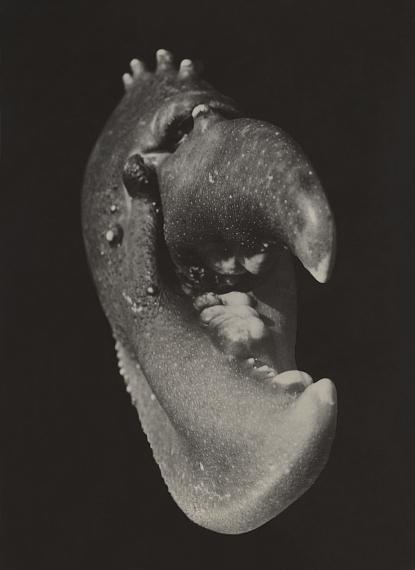
Lobster Claw / Pince d´homard, Port-Blanc, Bretagne, 1929
Silver gelatin paper
23 x 16,7 cm
Sammlung Dietmar Siegert
© Archives Jean Painlevé/Les Documents cinématographiques, Paris
Repro: Christian Schmieder
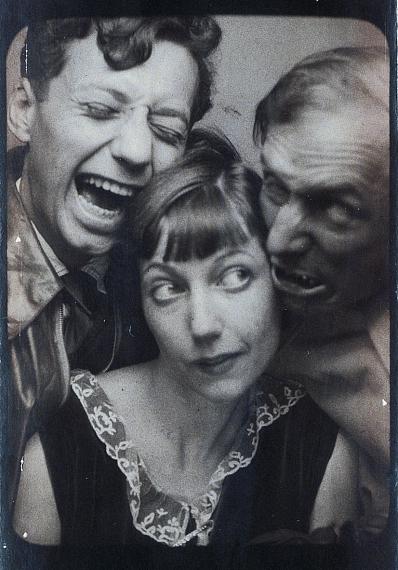
Photomaton, ca.1929
Silver gelatin paper
20,9 x 3,7 cm (Detail)
Sammlung Würth
© VG Bild-Kunst, Bonn 2024
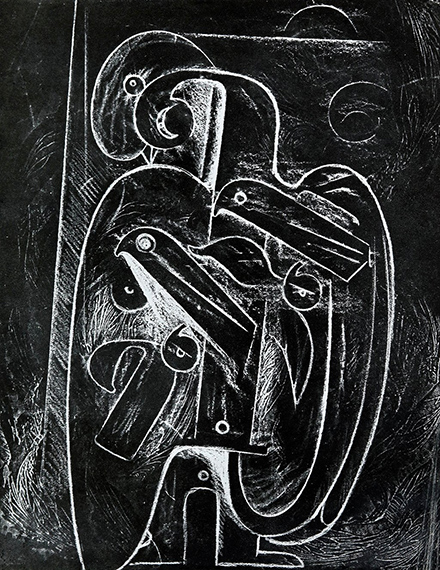
... des vollständig auf sie beschränkten, des vom Rest der Welt isolierten /
... d’absolument limité à eux, d’isolant du reste du monde,
aus: André Breton: Le château étoilé, 1936.
Fotogramm nach Frottage, 25 x 20 cm.
Sammlung Würth © VG Bild-Kunst, Bonn 2024